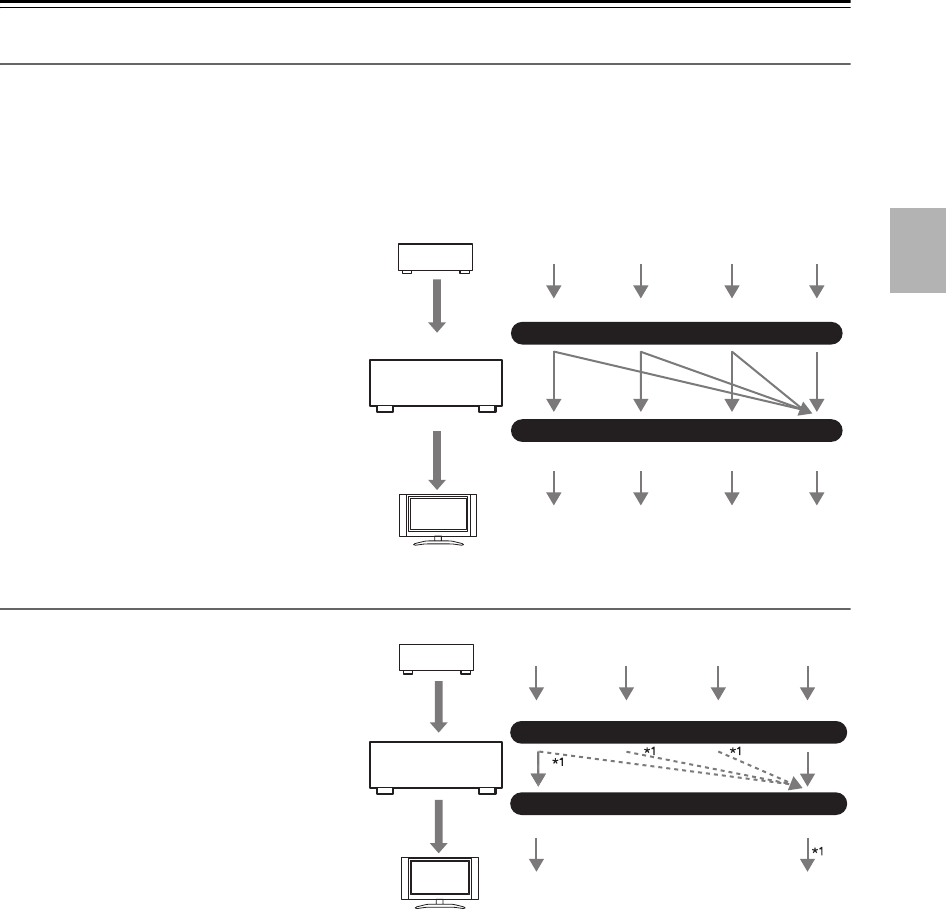
29
Connecting the AV receiver—Continued
Video Connection Formats (HT-RC180)
Video equipment can be connected to the AV receiver by using any one of the following video connection formats:
composite video, S-Video, component video, or HDMI, the latter offering the best picture quality.
For optimal video performance, THX recommends that video signals pass through the system without upconver-
sion (e.g., component video input through to component video output). It is also recommended that you press the
[VCR/DVR] and [RETURN] buttons on the AV receiver at the same time. Select “Skip” in the “VideoProcessor”
setting on the display. To reset back to the original setting, press the same button at the same time.
Video input signals flow through the AV receiver
as shown, with composite video, S-Video, and
component video sources all being upconverted
for the HDMI output.
The composite video, S-Video, and component
video outputs pass through their respective input
signals as they are.
Audio Connection Formats
Audio equipment can be connected to the AV
receiver by using any of the following audio con-
nection formats: analog, optical, coaxial, or
HDMI.
When choosing a connection format, bear in
mind that the AV receiver does not convert digital
input signals for analog line outputs and vice
versa. For example, audio signals connected to
an optical or coaxial digital input are not output
by the analog TV/TAPE OUT.
If signals are present at more than one input, the inputs will be selected automatically in the following order of priority:
HDMI, digital, analog.
IN
MONITOR OUT
DVD/BD player, etc.
AV receiver
TV, projector, etc.
Composite
Composite
S-Video
S-Video
Component
Component
Video Signal Flow Chart
HDMI
HDMI
IN
OUT
DVD/BD player, etc.
AV receiver
TV, projector, etc.
HDMICoaxial Analog
Audio Signal Flow Chart
HDMI Analog
Optical
*1 Depends on the “Audio TV Out” setting
(see page 100).
TX-NR807_En.book Page 29 Tuesday, July 28, 2009 12:00 PM


















